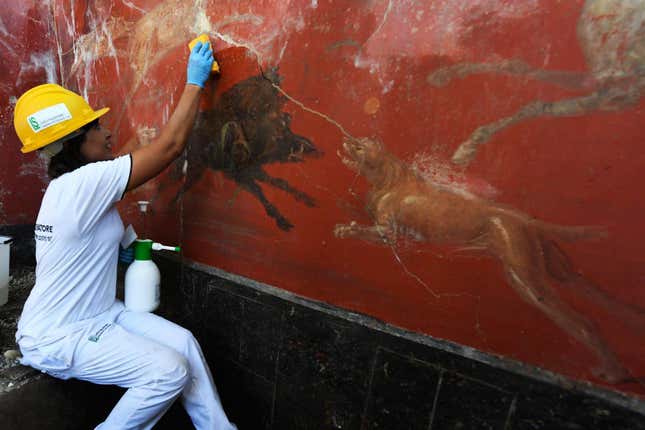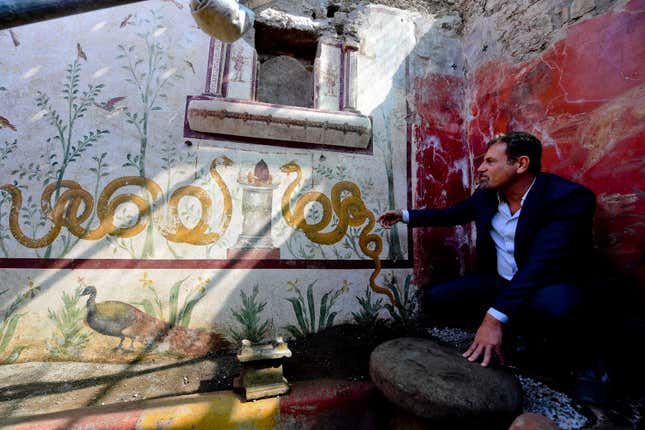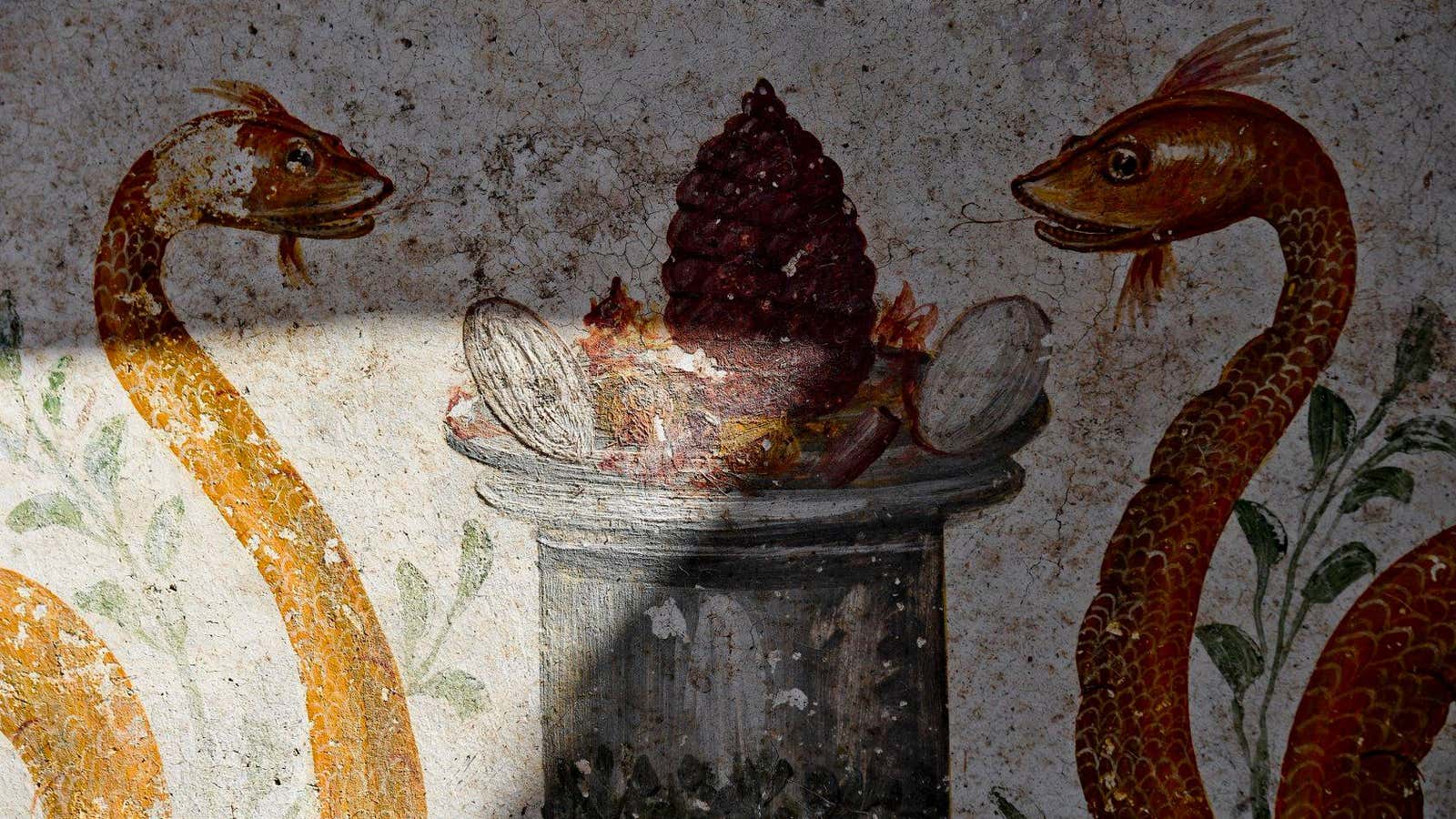When Pompeii was destroyed in a volcanic eruption in 79 AD, Pliny the Younger described to the historian Tactitus what it felt like as the residents fled and a mushroom cloud 27 miles high blotted the sky:
You might hear the shrieks of women, the screams of children, and the shouts of men; some calling for their children, others for their parents, others for their husbands, and seeking to recognize each other by the voices that replied; one lamenting his own fate, another that of his family; some wishing to die, from the very fear of dying; some lifting their hands to the gods; but the greater part convinced that there were now no gods at all, and that the final endless night of which we have heard had come upon the world.
The excavation of the doomed Roman town, buried under 9 ft (3 m) of ash from Mount Vesuvius, began in 1748 and birthed the modern field of archeology. Pompeii is still giving up its secrets to archeologists today.

The latest discovery is of a so-called enchanted garden in the north of the city, a room filled with vivid, incredibly well-preserved frescoes of peacocks, golden serpents sitting before an offering of food, boars tussling with other four-legged creatures, and birds fluttering in the sky. The Parco Archeologico di Pompei said that the two large serpents were “good daemons,” symbolizing prosperity and good luck.
The room—believed to be a lararium, a shrine dedicated to the spirits that protected Roman homes—is the biggest so far found at the ruins of Pompeii. “It is the first time that such complex decoration has been found in a space dedicated to worship inside a house,” said Massimo Osanna, director general of the ruins (paywall). The Wall Street Journal also reported that the room has a depiction of a man with the head of a dog, which is exciting and confusing scholars.

There are probably many more wonders like these waiting to be discovered. Italy—with EU funding—has been focusing on preserving the site, following threats from UNESCO to remove Pompeii from the list of world heritage sites if its condition did not improve. As a result, 270 years after its rediscovery, a third of the site has yet to even be excavated.
As the German writer Johann Wolfgang von Goethe, who visited as a tourist in 1787, noted, “There have been many disasters in this world, but few have given so much delight to posterity.”
